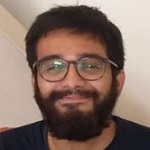A quick guide to reduce spread of Corona virus: COVID-19

You are urged to read this fully as the fight against COVID-19 will be a long, yet doable one. Preparation is the best way we can fight this virus!
“It is always better to prevent and prepare than to repent and repair”
“Everything we do before a pandemic will seem alarmist. Everything we do after will seem inadequate.” — Michael Leavitt
The coronavirus continues to exponentially infect people around the globe. As of today, there have been well over 100 confirmed cases of the infected individuals in India. This of course, cannot be the figure that one relies on, because it is certain that there will be many more unconfirmed cases that have not come to light as yet. While it is imperative that we do not allow hopelessness, fear and apathy guide our path, we must remember to be cautious, optimistic and express solidarity with our family, friends and neighbors. This comes in light of the WHO Director-General warning the public that not taking this seriously would be “a deadly mistake”. We must prepare for the worst.
The rate of the infections in this country as well as in the world is largely exponential, implying that the infection spreads quickly and in large numbers. The next two weeks and change (till March 31st) will be incredibly crucial to how this virus will affect us in coming months. Below is a succinct and simple infographic to understand why the curbing of possible infections is the need of the hour. The focus here is on our healthcare system and why it is imperative that we do not let it get overwhelmed, as there can only be a finite number of beds, nurses, doctors and other medical resources.
Explanation
The need of the hour, as explained above, is to reduce the number of infections. As is evident from the graph, the health care system can only handle so many patients. Once all beds are filled, it is anybody’s guess what happens to the rest of the patients. In fact, this is the problem doctors in Italy are facing. Due to rapid infection and low initial awareness (about COVID-19) among Italians, they are now having to choose who to treat and who to ignore, simply because there are not enough resources available at hand. Italy’s population is around 60.5 million. Despite having a relatively small population, they’ve been having a tough time with the virus. One can only imagine the crisis a country of 1.3 billion people will have if the nature of infection’s spread will be as ruthless as it was in Italy. So what can we do?
Solutions against COVID-19
The first way is aggressive social distancing.
Residents around the country have been urged to stay at home and refrain from going out at all, regardless of whether they may be sick or not. Cinema halls, gyms, malls, schools, colleges and other public places are continuously being ordered to close until March 31st as a measure to reduce the further spread of COVID-19. Infact, there are workplaces that have issued work-from-home orders for their employees as a protective measure. This will serve two important functions – one, isolate you from possible risk of exposure to the virus and two, prevent you from spreading the virus, even if you do not display any symptoms. This is an extremely powerful and important step in prevention and will have a significant impact on the rate at which the infection will spread. Furthermore, those with compromised immune systems and underlying conditions are at a higher risk. Please think of them at a time like this.
What to do if you have traveled from a country with COVID-19 cases or someone you were in contact with has tested positive for COVID-19?
In that case, self-isolation for a minimum of 14 days is the need of the moment. Then you must follow these instructions for a successful self-isolation:
- Separate yourself from others in a room. If you have to share a space with others, maintain at least 2m (6 feet) distance from others.
- Stay in a well-ventilated space
- Use separate utensils, crockery, vessels, clothes, towels, bedding, blankets etc. Wash bedding and clothes etc only when self-isolation is over and/or the individual is tested negative.
- Wash hands regularly.
- Avoid contact with pets.
- Dispose waste like tissues carefully as can be read here.
- Avoid taking anti-inflammatory drugs, as they may weaken the immune system.
- Lastly, if (any) symptoms persist and worsen, contact your doctor immediately.
Regardless, the numbers (with respect to overall population) are still small, and there is no-doubt an urgent need for immediate shutdowns and social distancing.
I still have to go to work/to class. What can I do to reduce the risk of contracting the virus?
The best thing would be to avoid going to these places as much as possible. Actionable steps that you can take are to write to your HR/higher management/deans/principals and insist that they, on behalf of the health of the organization/institution and all its employees/students, issue immediate and mandatory work-from-home instructions and in case of classes, either call them off like in Delhi, or conduct video/online classes, as is being done in many parts of the world. Those who unfortunately cannot conduct work from home, please be vigilant of yourself and your surroundings, use protective gear like gloves and masks and avoid contact with and maintain distance from anyone who may display symptoms.
BONUS tip: Get in touch with your RWA’s, local bodies etc and urge them to close down any public spaces, shopping centres, malls etc.
Do not hoard essential items!
Thankfully, due to our preferred mode of washroom hygiene, we do not need to hoard toilet paper. However, rations like rice, lentils, pulses, vegetables etc will always be required, and items like masks (whose effectiveness for healthy people has been scientifically disproven), sanitizers and hand wash soap have already been hoarded, with many pharmacies being out of stock for weeks now. The problem with hoarding is that those who need these items, namely medical staff (who work in close proximity with those who are infected) lose out on protective equipment and they are of course, the most vulnerable. By hoarding, those unable to purchase these items will bear the brunt of shortage while those who hoard will have plenty of extras on them. In addition, hoarding implies that stores run out of essential items before a proper supply chain can be established and that prices of even menial items go through the roof. Therefore stock up on essentials rationally and with kindness and consideration.
Lastly
If and when the virus does come for us and our loved ones, the nurses and the doctors will be the ones taking care of us. The least we can do therefore, is support them by 1. Reducing the load on the healthcare system and 2. Avoid hoarding medical supplies.
Conclusion
- Flatten the curve!
- Reduce infection rate!
- Reduce the load on the healthcare system!
- Save lives!
- Educate yourself and others!
- Fight together against COVID-19!
Further reading (consume twitter and reddit threads with a pinch of salt, of course)
This list will be continually updated:
- Updated link can be accessed here
- https://twitter.com/tina_nguyen/status/1238879814863519744 on why this week (14 March – 21 March 2020) is crucial.
- https://twitter.com/hsifyppah/status/1235222782725591045: a pharmacist’s advice on what to do during COVID-19.
- https://old.reddit.com/r/sydney/comments/fg65kj/psa_regarding_covid19_a_warning/: a large and detailed list of resources for your information.
- https://gisanddata.maps.arcgis.com/apps/opsdashboard/index.html#/bda7594740fd40299423467b48e9ecf6 a continuously updated list of numbers and figures.
- https://www.cdc.gov/coronavirus/2019-ncov/cases-updates/world-map.html CDC’s information.
- COVID-19 (novel coronavirus) – staying at home (self-isolation)
- Should I self-isolate and how do I do it?
- Coronavirus: how to self-isolate | World news
- COVID-19: stay at home guidance
- Social Distancing: This is Not a Snow Day
- It is being reported that asymptomatic transfer of COVID-19 is also possible. More information here: A Person Can Carry And Transmit COVID-19 Without Showing Symptoms, Scientists Confirm, and Transmission of Coronavirus Disease 2019 (COVID-19)









Readers' Reviews (7 replies)